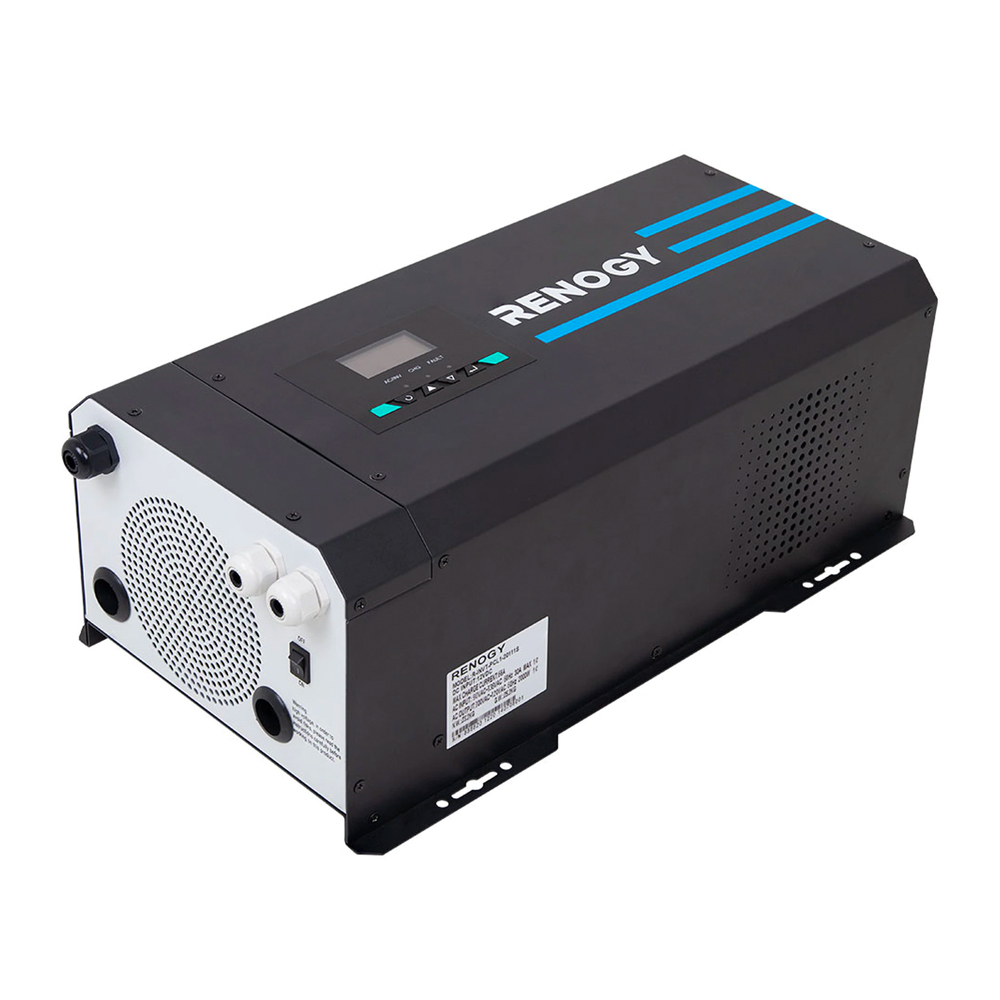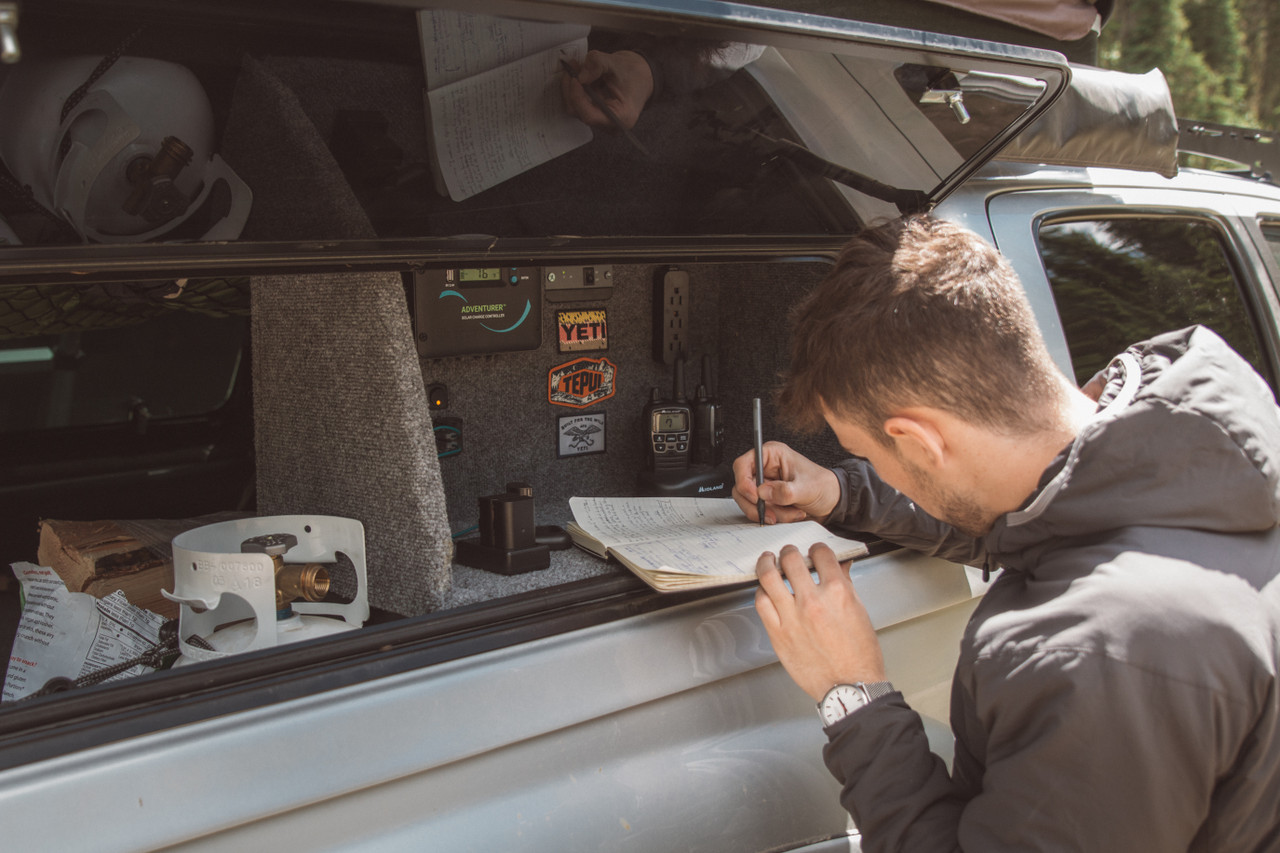Selecting a solar inverter for your off-grid solar installation
What to know about off-grid solar inverters
What is the best solar inverter when going off-grid?

Solar inverters may not be the first thing you think of when it comes to solar installations, but they are a crucial component to consider when piecing together your solar installation. Inverters turn power produced from your solar panels and stored in your battery from DC to AC power. An inverter is necessary to power the common appliances found in your home or RV, from TV’s to microwaves. When going off-grid, you’ll want to make sure you do the research to fully understand what inverters do, what different types are available, and how to select the right inverter for your system.
What is a solar inverter?
Inverters serve as the gateway between the photovoltaic system and the devices drawing energy from your system. They turn the direct current (DC) output into alternating current (AC), which is the standard used by all commercial appliances. Renogy sells a range of pure sine wave inverters of varying capacities. Sine wave inverters are capable of producing cleaner, smoother, quieter, and more reliable electricity to operate fans, lights, and other electronics without interference. Renogy inverters also provide overload protection for both DC input and AC output to prevent damage to the components and the unit.
 What is off-grid solar?
What is off-grid solar?
Off-grid solar systems, or stand-alone power systems, produce enough energy through the usage of solar panels and battery storage without having to tap into the electric grid. Off-grid systems have historically often been out of reach for most people because of the high costs of inverters and batteries. However, prices continue to drop and technologies continue to improve, making it more financially feasible for more people. Renogy has a variety of solar kits designed specifically for autonomous use away from the grid. These off-grid kits come with mostly everything you need to power up your cabin, home, and are great additions to sheds, tiny homes, or any other type of remote system.
Off-grid vs. on-grid vs. Hybrid
- Off-grid solar systems (stand-alone power systems)
Off-grid systems utilize batteries to store energy produced from solar panels. Systems must be sized and designed to fit a variety of needs throughout the year, especially in the winter when there are fewer sunlight hours. If you live in a remote area without reliable and affordable access to the grid, off-grid solar can be a great way to meet your energy needs.
- On-grid systems (grid-tie solar systems)
On-grid systems are the most common and widely used systems. You do not need battery storage and can simply use energy from your panels when they are producing. Then, when your panels aren’t producing power, such as at night or when it’s too overcast, you can tap into the grid. Excess solar that’s produced is often credited to your utility’s account with a mechanism known as net metering. Then you can use that power at night without paying extra.
One important thing to consider is on-grid systems do not function during a blackout. This is because it would be a safety concern for a system to push power into the grid when utility workers may be out making repairs to the network.
- On-grid systems with battery storage (hybrid systems)
With the decreasing costs of batteries, more and more people are choosing to add battery storage to their on-grid projects to be able to take advantage of the benefits of both on- and off-grid systems, such as having energy access during blackouts and having to pay for less energy from the grid.
What’s the difference between grid-tied inverters and off-grid inverters (standalone inverters)?
A grid-tied inverter for on-grid systems takes power from the solar panels, converts it from DC to AC, and pushes it into the grid. Typically, grid-tied inverters are easier to wire because there are fewer components to work with. Keep in mind, many jurisdictions require a system to be installed by a licensed contractor if connected to the grid. Grid tie solar inverters are the main gateway between the solar panels and the utility grid. It typically adapts the voltage and frequency of the alternating current to the grid. They also include various protections, such as anti-islanding protection, overvoltage protection, and insulation monitoring.
In off-grid systems, a charge controller will send the power to a battery bank and then an inverter will convert the DC to AC for the home. Off-grid inverters, known as stand-alone inverters, need a battery bank to function. When selecting off-grid solar inverters, it is essential that the output power of the inverter is large enough to support the loads of the system. Many off-grid solar inverters include an inverter charger in order to replenish the battery. Off-grid inverters will typically not communicate correctly with the utility grid and do not include the necessary protections present in grid-tied inverters, such as anti-islanding protection. This is when an inverter will shut down if it senses an issue with the grid, such as a power outage.
Can you use standalone inverters in grid-tie applications?
Inverters designed for off-grid systems should not be used if a system is going to be connected to the grid. This is because if there was a power outage, the PV system would still push energy into the grid, which would be a safety hazard for people repairing the grid. Grid tied inverters sense when there is a failure of the grid and shuts down the system.
What size solar inverters do I need for my system?
Solar inverters come in a range of different sizes. Like panels, inverters are rated in watts. Because your solar inverter converts DC electricity coming from the panels, your solar inverter needs to have the capacity to handle all the power your array produces. As a general rule of thumb, the size of your inverter should be similar to the DC rating of your solar panel system. So if you are installing a 2000 watt system, you should purchase an inverter of around 2000 W. To size your system, we recommend using the Renogy solar panel calculator.

Renogy has pure sine wave inverters ranging in size from 700 to 3000 watts. Inverter chargers are also a great option for those living off-grid who may also connect to shore power occasionally. In addition to converting DC to AC, the Renogy 2000W Pure Sine Wave Inverter Charger can charge and maintain a battery bank when connected to shore power.
You may have heard about modified sine wave inverters and pure sine wave inverters. Renogy only sells pure sine wave inverters, which are more sophisticated and are better equipped to protect sensitive electronics.
Conclusion
Solar inverters may not be the most exciting component of a solar installation, but they are crucial to protecting your system. High quality, pure sine wave inverters, keep your essential appliances and technology safe and charged in your off-grid set up.











